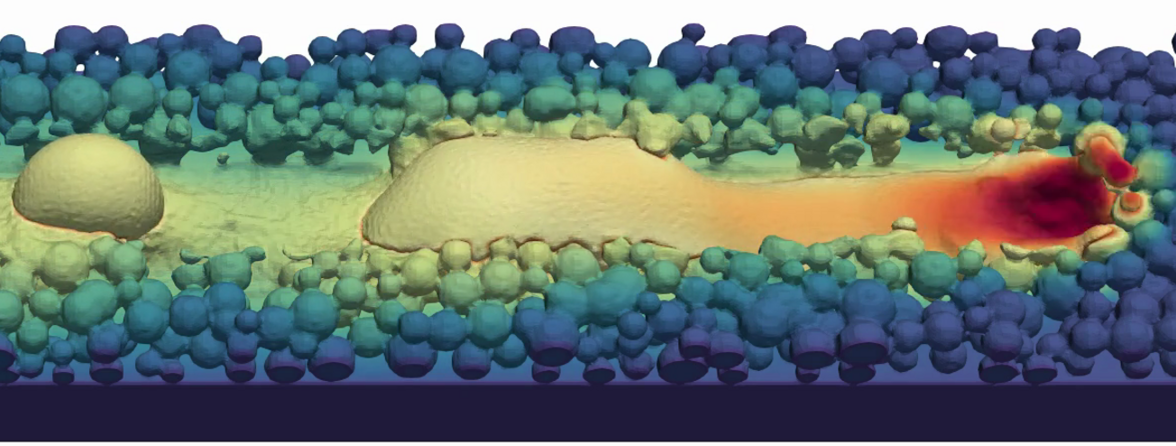Scientific Computation Hub
In our Scientific Computation Hub, we integrate state-of-the-art code frameworks tailored for fluid flow simulations and beyond. Developed at the Chair for Aerodynamics and Fluid Mechanics at TUM, our hub combines four distinct yet complementary frameworks: ALPACA, JAX-Fluids, TorchLBM, and LAMAS.
ALPACA and JAX-Fluids are versatile multi-phase compressible flow solvers, prioritizing accurate simulations, parallelism, and scalability. These frameworks utilize finite-volume high-order methods, ensuring the precise capturing of flow discontinuities. With implementations of diffuse- and sharp-interface methods, they excel in simulating various multi-phase flow scenarios across different applications. ALPACA employs adaptive mesh refinement techniques, enabling high-performant high-resolution simulations, while JAX-Fluids efficiently manages complex fluid flow scenarios using static stretched meshes, maximizing performance by a fixed domain decomposition.
TorchLBM stands out as a lattice Boltzmann method (LBM) solver, providing a unique approach to fluid flow simulations. Its scalability and parallelizability make it suitable for high-performance computations in diverse fields, including multi-phase flows and complex body-fluid interactions.
LAMAS specializes in additive manufacturing applications, focusing on the intricate interaction of multiple phases like gas, melt, and solid. Utilizing smoothed particle hydrodynamics (SPH), LAMAS offers a robust framework for simulating complex manufacturing processes, encompassing complex physics and free surface flows.
Incorporating machine learning into code frameworks is pivotal in modern computational science. ALPACA features closed-loop applications such as Bayesian optimization and automatic dataset generation, while JAX-Fluids offers full differentiability, enabling automatic differentiation for end-to-end optimization. Similarly, TorchLBM provides differentiability and extends to Fourier Neural Operators, enhancing prediction capabilities for accelerated steady-state flow simulations.
By integrating these frameworks into a centralized scientific computation hub, researchers can benefit from the strengths of each framework while fostering collaboration and cross-disciplinary innovation. Through interoperability and modular design of the frameworks, our hub offers a unified environment for addressing diverse fluid-dynamic challenges efficiently. We emphasize the significance of collaborative efforts in advancing scientific computation, demonstrating how the convergence of distinct frameworks can drive interdisciplinary research forward.



